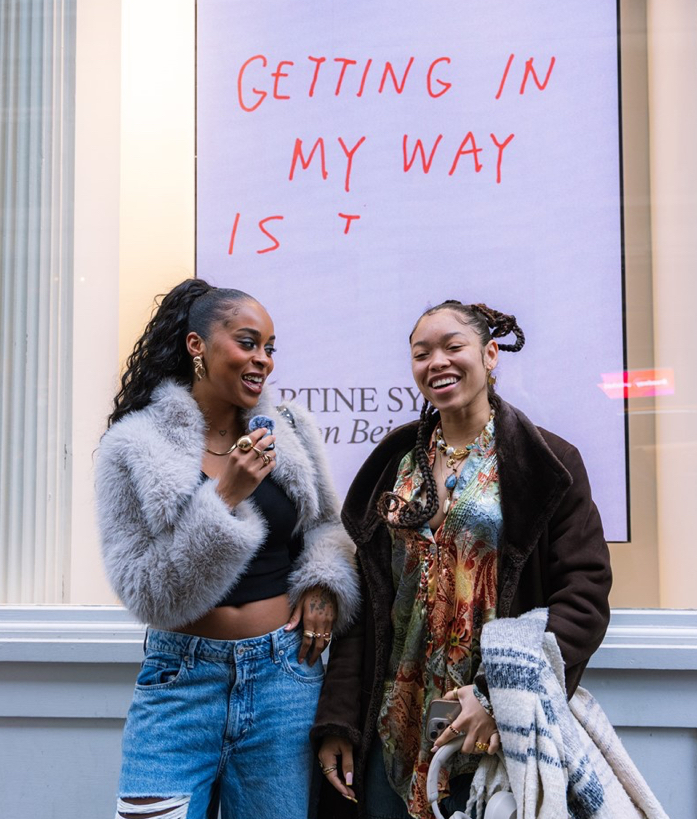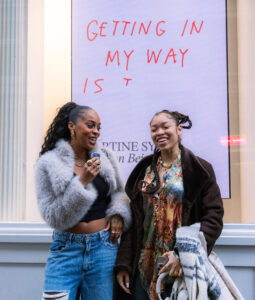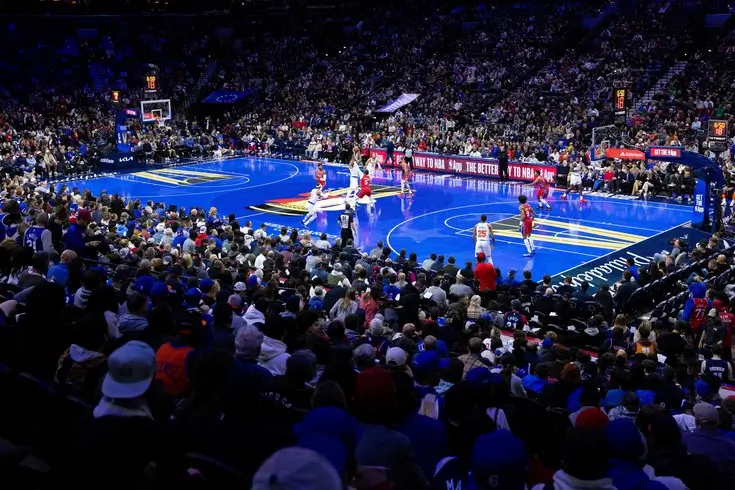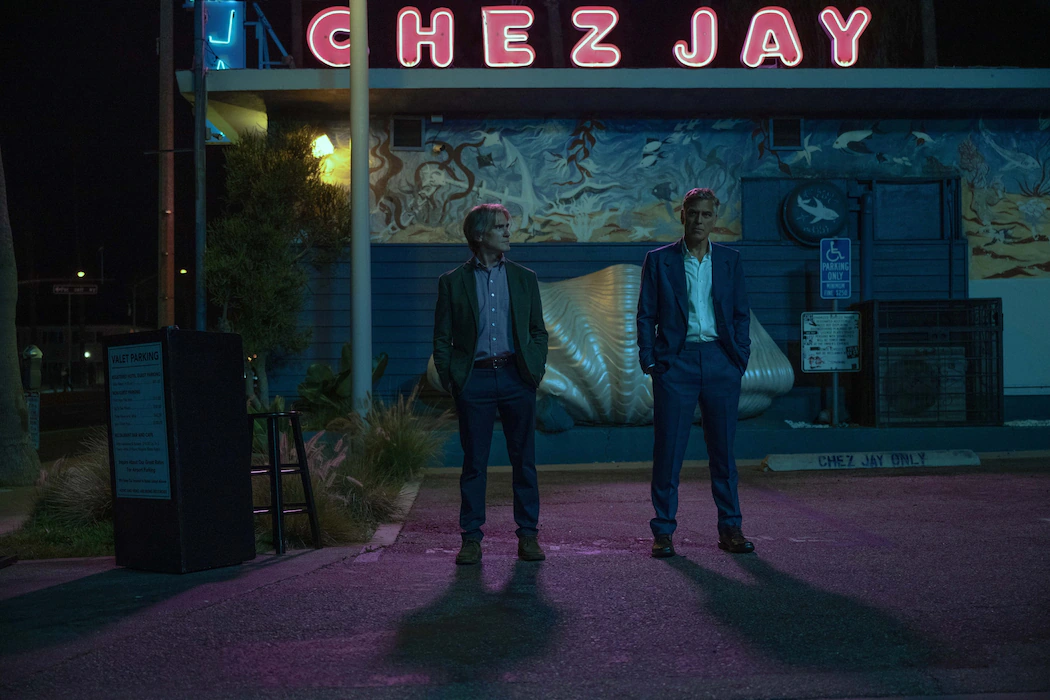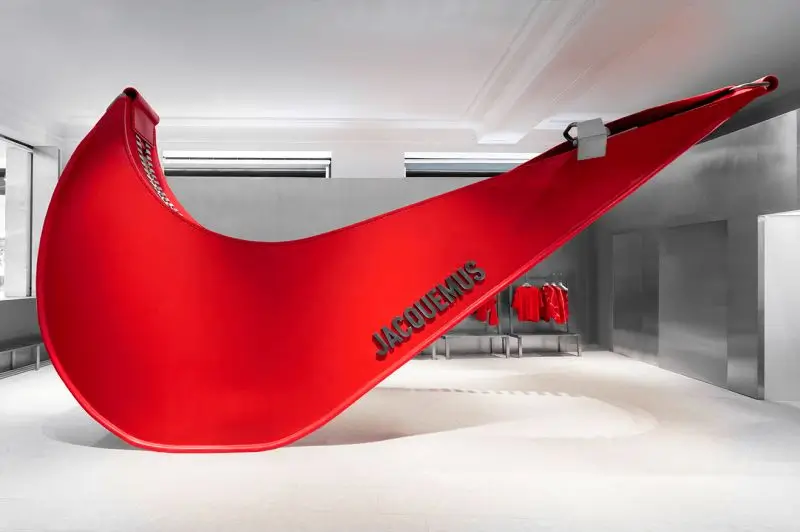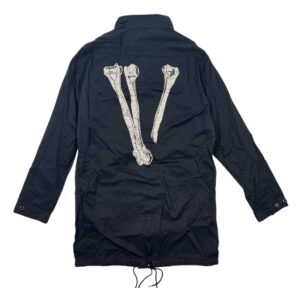On a cool spring night in downtown Manhattan, a line wrapped around the corner of Broadway and Broome, pulsing with creative energy. It wasn’t a club, nor a fashion week show. It was Martine Syms’ takeover of the H&M SoHo flagship — a collaborative cultural moment that turned a fast fashion retail space into a hotbed of zine swapping, T-shirt screen-printing, and idea exchange.
The April 2025 activation, which drew over 300 guests into the sleek, multistory flagship, felt less like a corporate event and more like a neighborhood jam session curated by one of contemporary art’s most distinctive voices. At the center was Syms — the artist, filmmaker, publisher, and thinker — whose fingerprints were all over the evening’s vibe.
Part fashion, part art installation, and entirely democratic in ethos, the event was a vivid intersection of retail and resistance, proving that even in a store as mainstream as H&M, there’s room for nuance, experimentation, and radical community building.
The Artist as Catalyst
Martine Syms has long explored the frameworks of media, representation, and Black identity through her work. Whether on gallery walls or film screens, she challenges how narrative is constructed — and who gets to control it. For her, art isn’t confined to canvas or cinema; it’s in every transaction of daily life, every social gesture, every mediated image.
At H&M, Syms subverted the retail space with that same lens.
Rather than branding this as a product launch or capsule drop, the event had no name beyond what it was: “Martine Syms at H&M.” It was Syms the artist, not Syms the collaborator. She wasn’t selling anything. In fact, she was giving it away.
Free Culture: Tees, Zines, and Touchpoints
Attendees were greeted with limited-edition, screen-printed T-shirts designed by Syms — each one featuring text-based compositions, minimal graphics, and signature touches from the artist’s past works. Produced live onsite at a DIY printing station, guests got to choose from a small collection of original phrases and artwork to be printed onto blank tees. This wasn’t just merch — it was participatory art. The act of selecting a phrase and watching it imprint onto fabric created a tactile link between guest and artist, object and authorship.
Nearby, a zine wall stretched across one of the interior panels of the SoHo store. Stacks of free zines — mini-publications filled with Syms’ notes, stills from recent video work, manifestos on media theory, and reader-submitted artwork — were handed out in paper bags marked “H&M x MS.” Some guests sat cross-legged on the floor flipping through the pages, while others stuffed extras in their tote bags to share with friends later.
For Syms, the zine format is more than nostalgic ephemera — it’s one of the last vestiges of true DIY publishing, a medium where artists can circulate ideas outside of elite institutions or market-based hierarchies. By reintroducing zines into the fast fashion context, Syms reminded her audience that culture doesn’t always require commerce.
New York’s Creative Crowd Shows Up
The event pulled a cross-section of downtown New York’s creative ecosystem. Filmmakers and designers rubbed elbows with art students and music producers. Familiar faces included artist Diamond Stingily, poet and curator Natasha Stagg, Hypebeast editor Jian DeLeon, and a few members of the ever-cryptic artist collective, Anonymous Club.
Models in no-name vintage gear mingled with stylists in Rick Owens and H&M basics. The dress code was freedom.
DJ Lindsey spun an ambient-to-dancehall set while guests drank canned sake and hibiscus soda from coolers near the window displays. It wasn’t glamorous, but it was honest. People were there to be — not to be seen.
And maybe that was the point. Syms didn’t perform. She didn’t address the crowd. Instead, she drifted from group to group, chatting quietly and letting the space — and its transformation — speak for itself.
Corporate Space, Artistic Intention
In a time when brand partnerships are increasingly under scrutiny — especially when involving artists of color — Syms’ activation felt like a rare example of institutional alignment done right. H&M gave her the space, and she gave it soul.
There was no product to buy. No hashtag to trend. No celebrity endorsement. The event was structured to resist commodification even as it took place inside a global retail chain.
“It’s not about the store,” one attendee said. “It’s about what we do with it. Martine’s just showing us how to claim space.”
That tension — between accessibility and art, between retail and rebellion — is where Syms operates best. This wasn’t the first time she’s infiltrated a mainstream platform, but it might be one of the most seamless. From the signage font to the lighting temperature, everything reflected her curatorial hand.
A New Model for Art in Public
The larger question posed by Syms’ presence in a store like H&M is this: Can art shift consumer behavior from within? Or is it merely decoration?
Syms didn’t lecture. She didn’t mount a campaign against fast fashion. But she did create a rupture — a pause. For a few hours, a place of transactional exchange became a site of generosity and conversation. Ideas were handed out like samples. Participation replaced purchase.
The event recalled the spirit of Syms’ own publishing project, Dominica, which functions as a platform for experimental writing and performance by Black women. That same ethos — plural, free, open-ended — flowed through the night’s design. The zines weren’t catalogues. The T-shirts weren’t logos. They were entry points. Gateways to dialogue.
Closing Reflections: Intimacy Over Influence
By the end of the evening, the lights dimmed just enough to signal closure without force. People trickled out in small groups, some still holding wet T-shirts from the printing table, others already swapping Instagrams. No one left empty-handed — either with a zine in their bag or a renewed perspective in their mind.
What Syms and H&M accomplished wasn’t groundbreaking because of its scale — 300 guests, one location, three hours. It was powerful because of its intimacy. It said: this space, usually built for selling, can hold more. It can hold thought. Exchange. Resistance. Joy.
In an era of hyper-curated activations and commercialized culture, Martine Syms’ SoHo event was a rare reminder that the most impactful moments often happen at ground level — on folding tables, with blank shirts, paper zines, and people who still believe in showing up.
No comments yet.

